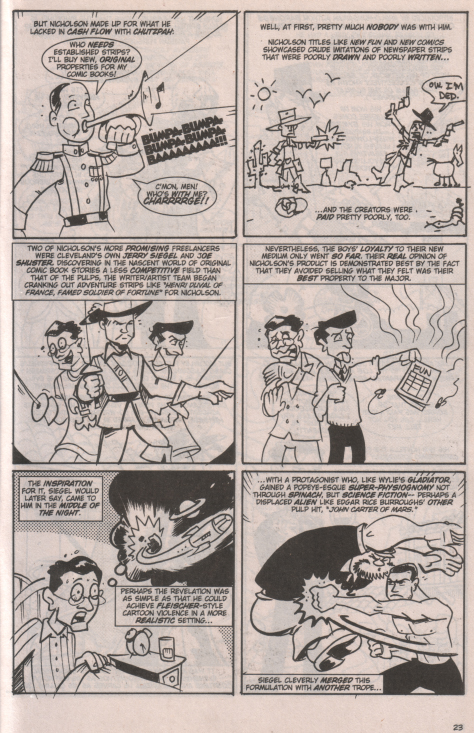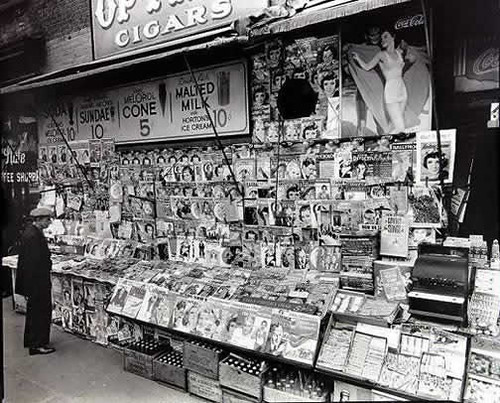 I was eagerly anticipating Fred van Lente's and Ryan Dunlavey's Comic Book Comics from Evil Twin. I thoroughly enjoyed Action Philosophers, and even used it in a composition class that I taught. I missed the new book when it first came out, and had to wait for my LCS to get their re-order before I could read it.
I was eagerly anticipating Fred van Lente's and Ryan Dunlavey's Comic Book Comics from Evil Twin. I thoroughly enjoyed Action Philosophers, and even used it in a composition class that I taught. I missed the new book when it first came out, and had to wait for my LCS to get their re-order before I could read it.Man, was I disappointed.
I read Men of Tomorrow not too long ago, and just used Comic Book Nation in a class, and am in the middle of Hajdu's The Ten-cent Plague right now, so comics historiography is on my mind. Van Lente and Dunlavey do a pretty good job of chronicling the rise of comic books, but unlike AP, which seemed to clarify and popularize, this history seems too often to over-simplify and generalize. The authors have a strong analytical position - their treatment of animation as a necessary element to understanding comics is a fresh perspective, for example - but it seems that they were not terribly critical in assessing some of their sources. They seem to take the stories of Major Malcolm Wheeler-Nicholson's exploits prior to his publishing career at face value, for example, rather than including any additional information.
But scholarship quibbles aside, the major disappointment with book was just that it wasn't very good as comics. I couldn't see how presenting this in comics format added anything to to the telling: the creators don't really seem to be exploiting the form. On the contrary, most of the panels are merely non-sequential illustrations that "act out" the text without adding anything new to the communication. Take this page, which also includes the good major:

With the exception of the first panel, with its symbolic representation of Nicholson as a leader and where the word balloon dialog "Who's with me" is answered in the subsequent caption box, none of the illustrations adds anything to the text in any integral or creative way. Does the inclusion of a deliberately bad drawing in panel two really add to the description of the crude art found in early comics? Does a sketch of three swashbuckler types in panel three (two with Siegel and Shuster's faces) help us understand the description of strips like Henri Duval better? It would appear not.
There just seemed to be too much of this throughout the book. If I was just a little more OCD, I would type out all the caption boxes as straight text to see just how little editing it would take to turn the comic into prose. I'm betting very little.
So, as much as I enjoy reading about the history of comics, I'm not sure I'll be scooping up the floppies on this one. The trade may have to be part of my library just for the sake of completeness, but I'm afraid my enthusiasm for the project has dimmed.
And now, a little comicsy mystery:
As I wander around the net, I often save images of people reading comic books and newsstands selling comic books, just for fun and personal use, like for computer wallpaper. Here's one that I found somewhere:

It seems to show a newsstand in early 1938, as you can see several copies of Action Comics #1 on the lower rack in the front right. Pretty cool piece of comics history, eh?
Well, it took a student of mine, who was looking on the net for a copy of this image after I showed it to the class as part of an exercise, to point me to this from the Museum of the City of New York:

Notice that the comics are gone, and with good reason: the photo was taken by Berenice Abbot in late 1935 - over two and a half years before Action was published.
Why would someone photoshop this picture?
Unfortunately, I haven't found a source for the doctored image yet. I'll let you know if and when I do, unless someone tells me first.
Until then, remember: document your sources!



